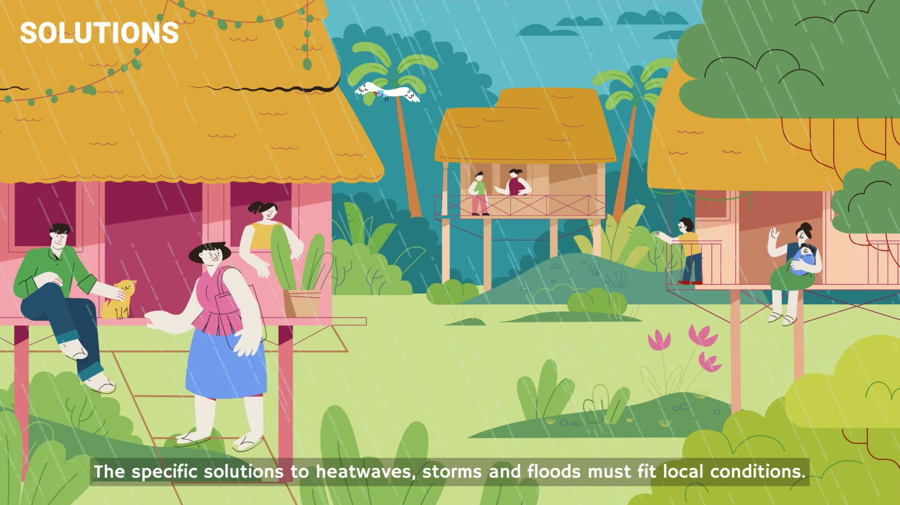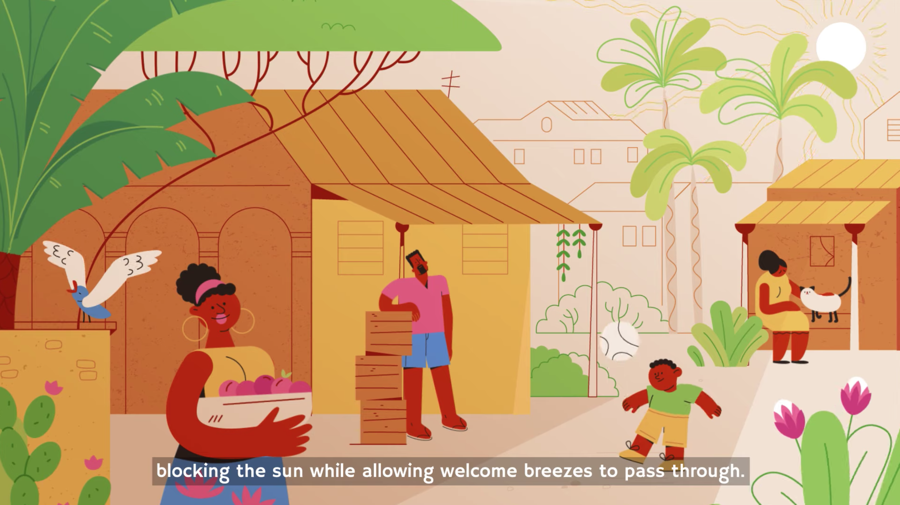Heatwaves, drought, wildfires, cyclones, hurricanes, flooding, and other extreme weather events are caused by carbon dioxide emissions from the burning of fossil fuels like coal, natural gas, and petroleum, which traps heat in the atmosphere. These challenging conditions are also caused and amplified by poor environmental design that doesn’t consider or work alongside each ecosystem’s long-tested solutions. How can we start to fix this?
To help communities across the planet prepare for the impacts of the changing climate, the UN Environment Programme created A Practical Guide to Climate-Resilient Buildings and Communities.
The video above provides an animated summary for how we can design and build for our warming world.
Some examples from the UN Environment Programme:
“For instance, it shows us how to reduce indoor heat in hot and arid climates, or how to mitigate cyclone impacts on buildings in hot and humid climates. Importantly, the report also provides us with a highly practical checklist that should be considered by government officers and development practitioners when undertaking a new building project.”
“The guidance has been developed because there is a recognized need to understand good practices for climate-resilient buildings in communities that may suffer from a deficit of professionally trained architects, engineers, and other practitioners. Therefore, this note is written for a broad audience, including those with little experience in the building and construction industries.”
Sharing specific examples, this UNEP article also summarizes five ways to make buildings climate change resilient to heatwaves, drought, coastal flooding and sea-level rise, cyclones and strong winds, and cold.
Follow the UN Environment Programme on YouTube, Twitter, Facebook, and Instagram.
Then watch these related videos:
• How can nature be used as a tool to restore ecosystems?
• Can oysters stop a flood?
• Can beavers help mitigate wildfire and drought?
• Erosion demonstration: Comparing grass, dead leaves, and soil
• Mangroves + Oysters + Earthen Dikes = Eco Engineering
• How to Save Our Planet
• How To Solve Every Global Crisis
Bonus: Think Like a Tree – Problem-solving with nature’s best ideas.
Curated, kid-friendly, independently-published. Support this mission by becoming a sustaining member today.





